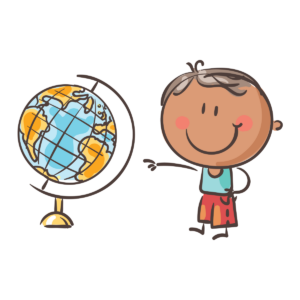Austin is the second largest community in Chicago and just a few years ago was considered the deadliest area in the city.
“We knew we could make a huge impact if we changed the most violent neighborhood into a community known for its beautiful parks, schools and STEM work,” says Natasha Smith-Walker, executive director of Project Exploration, the backbone organization of the Chicago STEM Pathways Cooperative.
 In 2017, the ecosystem engaged all members of the community in extensive listening sessions to best understand their needs and desires. This included students, families, a Community Action Council and subject experts, such early childhood education specialists.
In 2017, the ecosystem engaged all members of the community in extensive listening sessions to best understand their needs and desires. This included students, families, a Community Action Council and subject experts, such early childhood education specialists.
Leveraging community assets
The trusted community organization working with at-risk youth, Build Chicago, came to the listening sessions and realized they could leverage their existing partnerships with families, expanded learning providers and schools to disseminate information and new resources and opportunities coming into Austin.
“In the prevention department of our work, we were connecting youth to opportunities to keep them on track,” says Stephanie <LAST NAME>, <title> at Build Chicago. “The work of the ecosystem fit perfectly with what we were already doing and exposed kids to things they never would have had access to before.”
Smith-Walker emphasizes the expertise of community-based organizations like Build Chicago. “We have strong partnerships with organizations that have been doing work in hard to serve communities for four or five years. This provides the ecosystem with resources to address some of the trauma and chaos that can exist in a child’s life, such as substance abuse or domestic violence. We have counselors on site and can intervene to help a parent sober up before they interact with their child thanks to these community assets.”
Strong relationships with entities like Parent University within Chicago Public Schools and the Community Action Council, a parent and education advisory group, has led to successful outcomes for families and has resulted in growing partnerships with local government, like the Mayor.
Exposure matters
Smith-Walker has been doing this work for 20 years and believes that families are the best way to engage all children and ensure communities that have not been traditionally exposed to STEM have access to high-quality STEM learning opportunities.
She is joined by several families from the area to discuss how STEM has truly changed their community.
“The Project Exploration team has brought more outbound learning into the community than anything else we have experienced,” says Lisa Wiggins, mother of a second grade girl. “I’ve seen a huge difference in her literacy as well as math. They make learning fun for the kids and integrate everything. Science isn’t just science anymore. It’s tied to math and reading now too.”
Families involved in the ecosystem expand beyond traditional parent to child relationships.
 “My grandson’s curiosity has expanded tremendously. He is constantly trying to understand how nature works or trying to figure out how to make certain things work,” says Yvonne Livingston, a grandmother and mother to six adult children. “My kids never had the opportunity to see STEM from an early age and that is what I am seeking for my grandson. It’s so important he gets to build an early foundation and doesn’t need to wait until high school or college to understand the importance of STEM.”
“My grandson’s curiosity has expanded tremendously. He is constantly trying to understand how nature works or trying to figure out how to make certain things work,” says Yvonne Livingston, a grandmother and mother to six adult children. “My kids never had the opportunity to see STEM from an early age and that is what I am seeking for my grandson. It’s so important he gets to build an early foundation and doesn’t need to wait until high school or college to understand the importance of STEM.”
The ecosystem is making STEM fun to get families excited about learning by hosting:
- Design challenges for some healthy competition between parents;
- Music engineering programs;
- LEGO coding workshops; and
- Visits from local companies like Honeywell, for exposure to careers using chemistry.
Change ripples into the community
Families recount how their children and grandren being enrolled in the program have changed habits within their homes.
“We have started recycling at home and we love it,” says Wiggins. “My daughter won’t let her sister throw some things away either. An empty bottle turns into a science project at home and she plays teacher with us all. Sometimes we make a mess of the house just experimenting – it is really fun.”
Austin families mention searching the internet for more information about food waste and climate change. Their households have served as beacons of learning for the community, taking what they have learned back home and amplifying the word about opportunities far and wide.
“My grandson has been monitoring the length of our showers at home,” Livingston chuckles. “If you are in the shower for longer than 15 minutes, he will knock on the door and tell you about all the water you are wasting. We are learning in the home, but it is being given to the community as well. I have shared our own education and the program information with everyone I know, including posting on Facebook. Where we are from, on the south and west sides of Chicago these opportunities are rare and you can’t put a dollar on the value of what these kids are learning. It’s important to spread the word like a virus, with learning moving from house to house.”
“I heard about the program through word of mouth, says <INSERT Mother of KY name>. “I remember the presentation done at my son’s school and have shared that information with my neighbors and friends. It’s affordable and has my son engaged in exciting activities like robotics. I wish I knew about the program sooner.”
Growth through partnership
As the Chicago STEM Pathways Cooperative has grown in the number of programs and services offered to Austin families, their positive reputation has grown as well. A partnership with the district has allowed the ecosystem to create a large physical presence in the neighborhood.
“The district had a meeting with us to discuss the expansion of STEM programming into their schools. We said great we can take a classroom or two,” recounts Smith-Walker. “The superintendent walked us over to a huge building across the street and pointed to it saying, ‘no, we want you to take the whole building.’ I was overwhelmed at first, but we have filled that building and are already at capacity – the work keeps growing.”
KEY TAKEAWAYS
- Leverage community-based organizations to do what they do best – engage the community.
- Listen to families to ensure your programs are serving the community and highlight their input to recruit new families into the work.
- Reclaim the narrative and allow learning and the community to be a part of creating a new positive future for youth and families.
Chicago STEM Pathways Cooperative
Convening stakeholders in Chicago’s STEM ecosystem to address inequities in the STEM learning continuum by facilitating cross-sector knowledge building, collaboration, and collective action.

